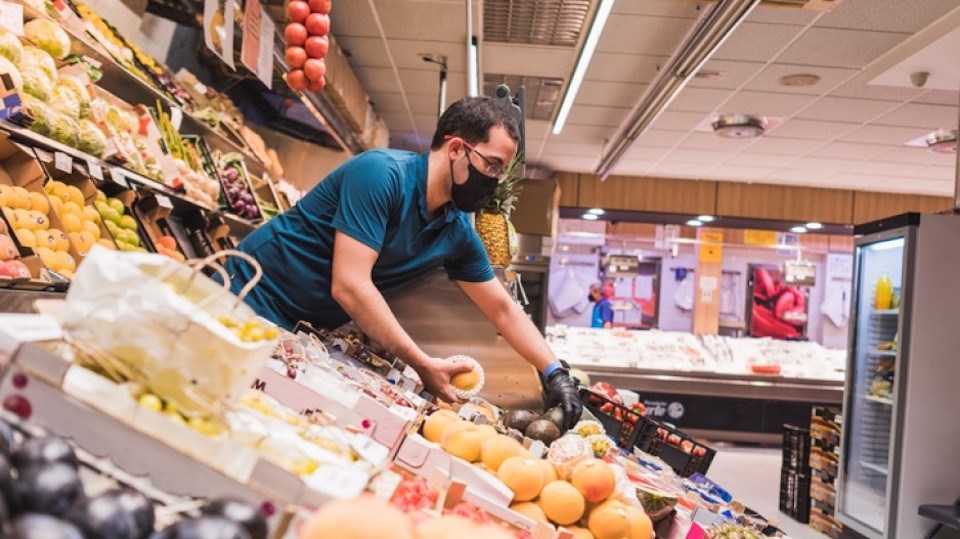The competition is hot among developers to bring to market the tastiest and most "believable" plant-based analogs for traditional meat. While such alternatives may not be as popular as the real thing just yet, their popularity is increasing rapidly: Sales of plant-based foods shot up 54% from 2019, That same year, sales of plant-based products grew three times as fast as total food sales. By 2030, it is projected that plant-based food products will occupy 10% of the world food market.
Besides potential health- and taste-based benefits, plant-based meat is also being positioned as good for the consumer's conscience. The conventional meat industry—which is dominated by beef, poultry, and pork—not only for grazing and growing the animals' feed, but it is also a to detrimental climate change.
Though the exponential growth in sales of plant-based foods is encouraging, industrial meat agriculture is still growing right alongside it. Since 1977, overall meat production in the U.S.—including beef, chicken, pork, veal, lamb, and turkey—has , from just over 48 billion pounds to more than 98 billion pounds in 2022, according to the Department of Agriculture. Looking at the agricultural practices that make plant-based alternatives more sustainable can help and set up production systems that curb the damage of industrial livestock agriculture as much as possible.
compiled data on four markers that show how consuming plant-based meat instead of conventional meat is better for the planet using 2021 research by the. An important note: All products named in the following visualizations—other than those noted as produced by Impossible Foods or Beyond Meat—are produced by Morningstar Farms.
Reduction of land use
It takes a lot of land to raise and farm livestock: Around , and another third is used to grow crops for the same animals to eat. Moreover, deforestation to create cattle pastureland is a common practice. A 2016 report by the Union of Concerned Scientists estimated that, in Latin America alone, areas are deforested each year for pastureland.
In the United States, 41% of all land is used for either cattle grazing or growing feed to . It is estimated that if the entire U.S. population were to surrender its appetite for conventional meat and go vegan with plant-based alternatives, of the presently used farmland would be needed to grow and process enough food to feed every person in the country.
Besides using up land, livestock farming also degrades the quality of the earth in proximity to its operations: each year is the direct result of industrial animal farming.
Reduction of greenhouse gas emissions
On a global scale, food production produces an of greenhouse gas each year, equivalent to more than double across all industries, en masse. A 2021 study published in Nature found that the production of conventional meat results in GHG released as the production of plant-based foods.
Of course, the plant-based industry is much smaller than the conventional meat industry, and plant-based farming isn't entirely harmless, as it still requires the use of gas-emitting farming machinery and nationwide distribution. That said, the crops alone don't release harmful gases into the air; the primary culprit, aside from the industrial implications of production, are the .A 2019 study suggested that if every American were to reduce their meat consumption by just 25%, global GHG emissions would .
When you consider that global carbon dioxide emissions alone were in 2020, and CO2 is but one form of GHG, the implications of wider adoption of plant-based alternatives could have sizable impacts on global environmental health and sustainability.
Reduction of water use
Meat production requires a huge amount of water—and none more than beef. From the water used to irrigate and sustain the cropland devoted to growing animal feed to the water consumed by the animals themselves to the water used in the butchering and processing facilities, is needed to produce 1 pound of beef.
And it's not just how much water is being hoarded—it's also the type of water used. While plants can rely solely on rainwater or irrigation water—known as "green" and "blue" water, respectively—industrial meat production necessitates : "gray" water for cleaning, processing, and other industrial processes.
By contrast, two major sources of plant protein commonly used in the production of plant-based meat alternatives——require 256 gallons and 72 gallons per pound produced, respectively, while potatoes, another protein source with , need just 36 gallons of water per pound.
Reduction in damage to water sources due to production
During a process called eutrophication, oceanic and freshwater sources become from nearby runoff, effectively suffocating animal life there. An estimated , with animal products claiming the largest share of responsibility. Beef, for instance, produces 365 grams of runoff per kilogram of meat produced.
The negative effects of eutrophication are most clearly visible in the a 6,000- to 7,000-square-mile region in which no sea life is sustainable due to the level of animal waste and fertilizer contamination. In contrast, solely crop-focused farming, in which animal waste is all but eliminated, can from making its way into nearby bodies of water, dramatically reducing the rate of eutrophication.
This story originally appeared on Thistle and was produced and distributed in partnership with Stacker Studio.



